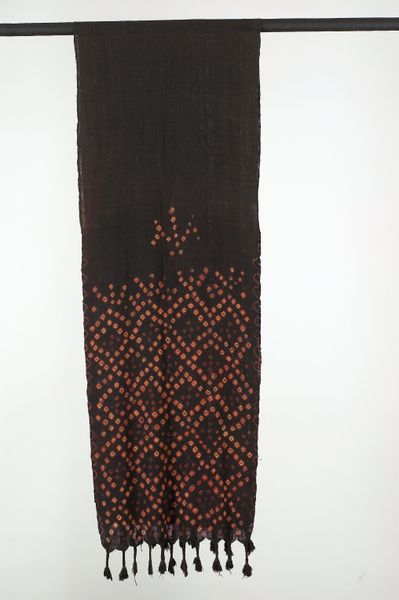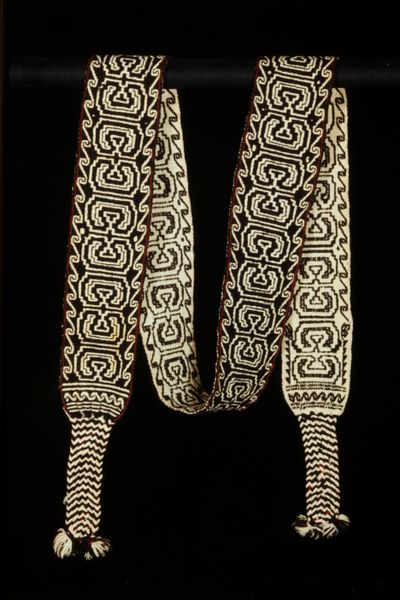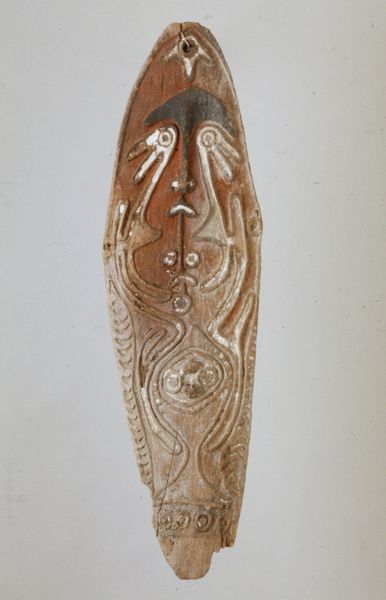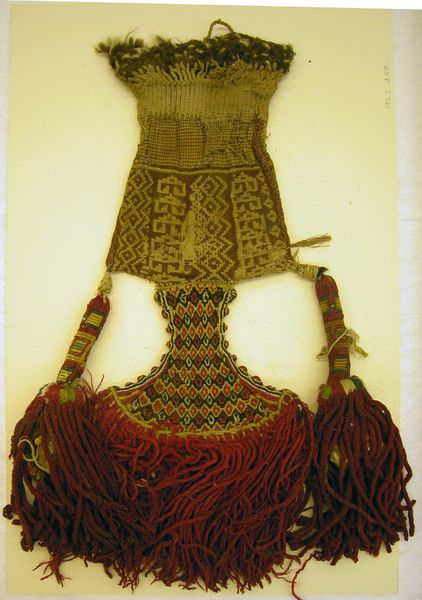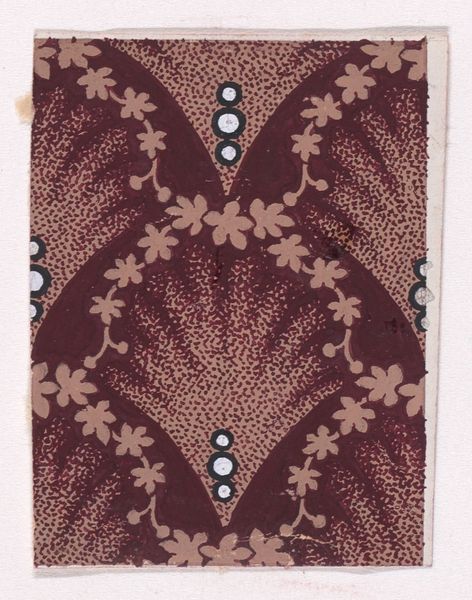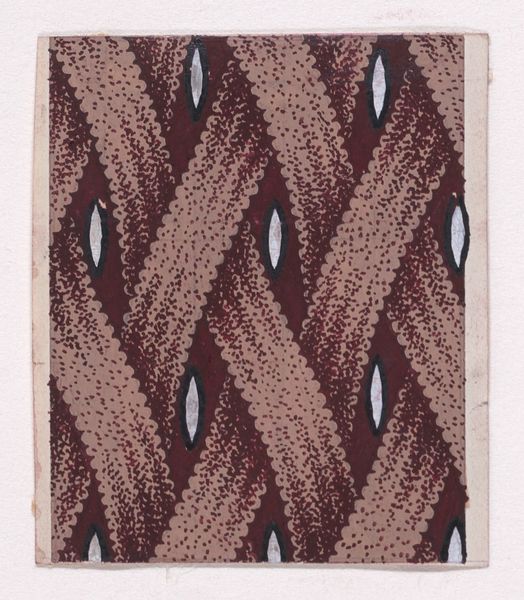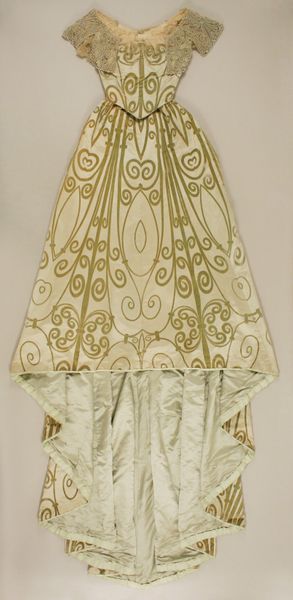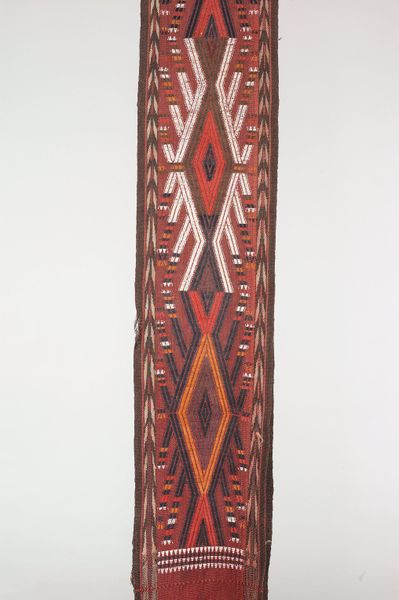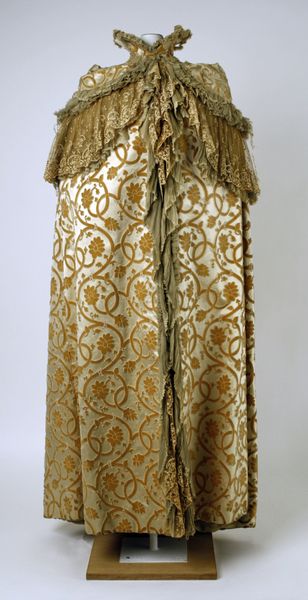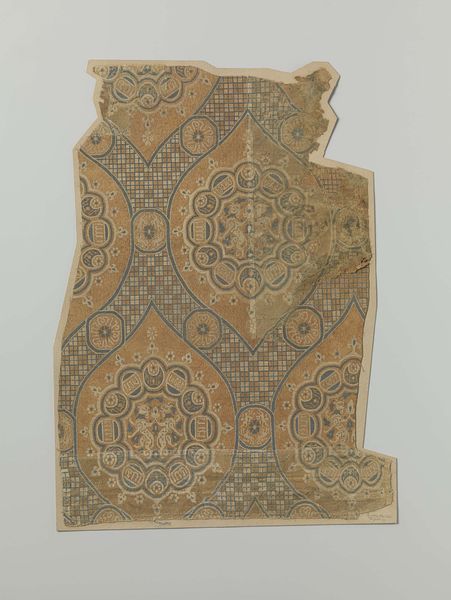
wood
#
wood
#
decorative-art
Dimensions: 109 x 60in. (276.9 x 152.4cm)
Copyright: Public Domain
Editor: So, this mixed-media piece is called "House Gable," and it’s attributed to the Abelam people, around the 20th century. It looks like paint on wood. What strikes me most is its decorative nature – all those geometric shapes create such a visually stimulating surface. How do you read this piece? Curator: I’m interested in its construction. These "House Gables" weren’t simply painted, they were constructed, relying on the community’s access to specific pigments and woodworking skills. How might the availability of certain resources influence the overall design? And consider, for instance, the specific ochres and charcoals employed – where did they source those? The materiality itself carries significance. Editor: That's interesting! I hadn't considered the pigments themselves. The repeated geometric motifs make me wonder, what’s the function of such decoration? Does the production play a role in the community's identity? Curator: Exactly! Think about the labor involved in preparing the wood, mixing the pigments, and meticulously applying the paint. Who performs this labor, and what does that tell us about the division of tasks within Abelam society? It becomes a marker of identity and value. Editor: So it’s not just about aesthetics, it's about the process. Does the social hierarchy or structure within the Abelam culture inform who creates these house gables? Curator: Precisely. The creation isn’t separate from its cultural context; it's intrinsically linked to it. Exploring these pieces in terms of resource access, labor practices, and skill specialization gives insight into Abelam culture. What does art mean when the means of production are considered first? Editor: Wow, I’m walking away thinking differently about this artwork. The process of its creation is much more fascinating now than just its final look. It really gives the object meaning! Curator: Yes! Examining the material conditions helps reveal hidden social dynamics that challenge traditional notions of art historical value.
Comments
No comments
Be the first to comment and join the conversation on the ultimate creative platform.
